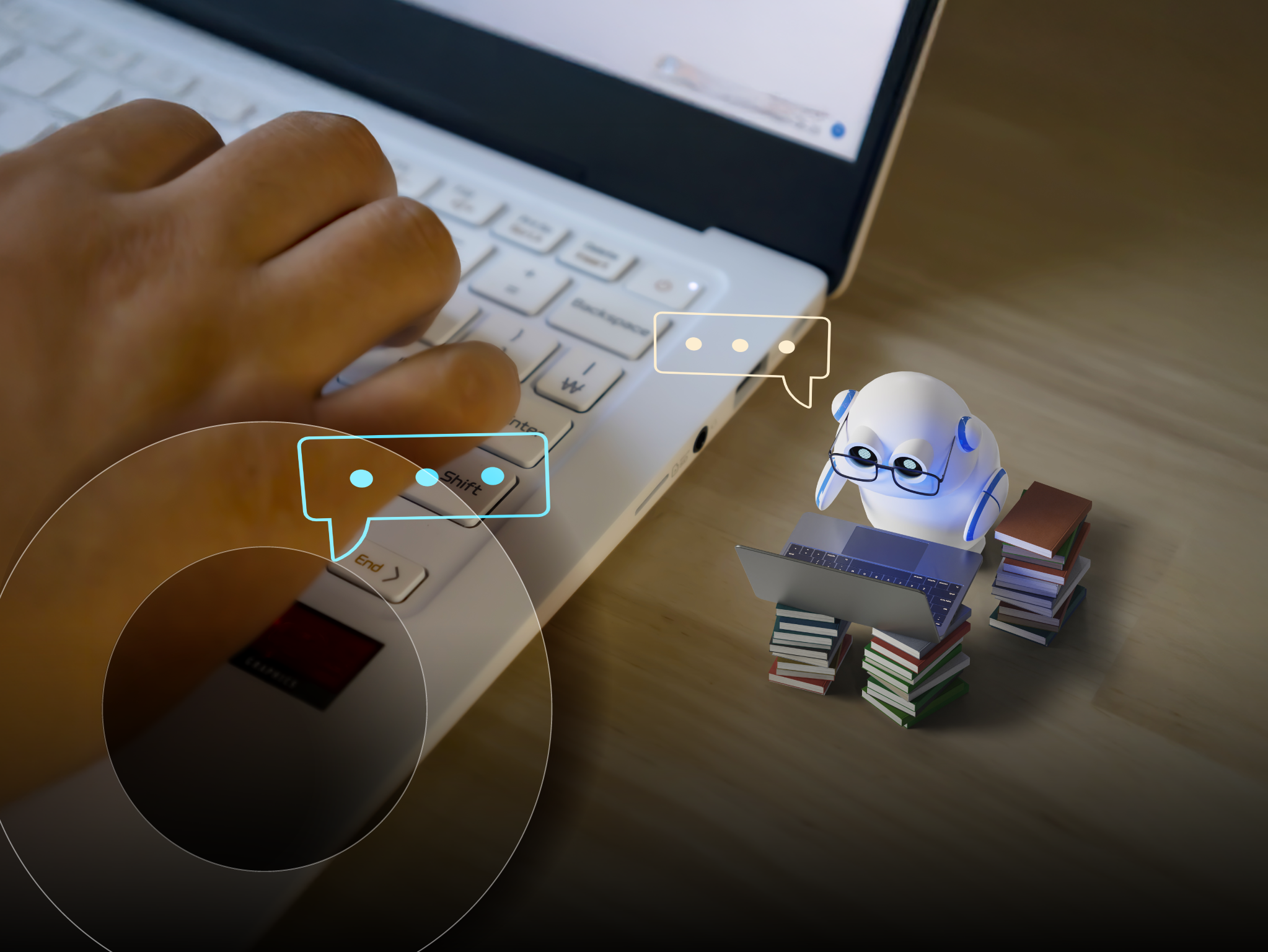Giving thanks for AI: How it’s revolutionizing education in unexpected ways:
This year, gratitude is automatic.

Today isn’t Thanksgiving. But even the most random Thursday can be a good time to look around your figurative table and acknowledge the impact of others on your life. If you’re a college or university, your Thanksgiving table may look full, but it’s time to scoot a little to your left because AI just pulled up a chair.
The integration of AI into teaching and learning has the potential to fill everyone’s plates. As higher ed institutions adapt to the evolving landscape, artificial intelligence promises to enhance instructional methods, engage students, and improve learning outcomes. While there will always be challenges and ethics to consider, AI is already reshaping the educational sector. Once you know where to start, you may end up being more grateful than you think.
Break bread with business process automation
The optimization of administrative processes is an area where AI shines, transforming daily tasks and reducing staff workloads. For higher education institutions, the following use cases exemplify the potential of AI in streamlining operations:
1. Student records management
AI can automate all things student records, including enrollment status, grades, and transcripts. This decreases the administrative burden on staff, ensuring data accuracy and accessibility.
2. Financial processes
Ready to reduce staff workload while also optimizing your financial department? Everything from invoice processing, expense approvals, and financial reporting can be automated using AI.
3. Class scheduling
AI can consider various factors like class size, room availability, and professors’ schedules to create optimal calendars and ensure efficient use of resources.
4. Grading
Scoring multiple-choice exams and short-answer questions has never been easier. This automation significantly reduces the grading workload for instructors and guarantees more consistent, timely feedback for students.
5. Library and facilities management
Imagine not having to schedule maintenance, manage inventory, or track energy usage. AI can even automate library functions, such as categorization and retrieval of books. This reduces the workload for library staff while also making resources more accessible to students.
6. Alumni engagement
That alumni database that keeps growing every semester? AI can analyze it and automate outreach efforts, streamlining workloads for the alumni relations team and enhancing engagement with former students.
7. Research administration
Application review, fund allocation, reporting: Almost any part of research grant management you can name, AI can automate.
Catch up with campus’s chatbot/virtual assistant
If you’re looking to make small talk at the table, ask the round-the-clock AI-powered chatbot next to you what it’s capable of for student support. It’ll probably tell you it can:
- Ease processes like registration, financial aid applications, housing selection, and university services.
- Provide personalized guidance on academic advising, campus resources, financial aid, and career planning.
- Answer questions about campus services, library resources, course schedules, or even academic matters.
- Help students manage their studies with reminders about deadlines or required documents.
- Offer well-being advice when students need it most.
Just don’t ask it to pass the green beans.
Setting the table with student support
Beyond the chatbots and digital coaches, AI has the potential to revolutionize the higher education experience for students. By analyzing their interests and academic performance, AI can recommend suitable courses, giving students the information they need to make informed decisions about their academic journeys. Once those courses have been chosen, AI-powered digital tutors can provide personalized help that adapts to individual learning styles.
On the other side of the table, teachers can automate processes like tracking attendance, so AI can identify patterns in absenteeism and allow for timely intervention. But it’s not just skilled at looking backward; predictive analytics are AI’s meat and potatoes. This skill set helps institutions forecast student outcomes and flags individuals who need support most, thus improving retention rates.
However, AI integration is also not without its challenges and ethical considerations. As it continues to permeate educational practices, institutions must be vigilant about data privacy and bias mitigation. After all, the turkey may be worth eating, but without proper kitchen protocols, there may not be a kitchen for long.
Ultimately though, AI can be a collaborative tool that complements human instruction. The fusion of human expertise and AI capabilities creates a blended learning model where teachers and AI work in tandem to deliver the best educational outcomes. Now that’s a meal worth making. But how do you get the recipe?
A solution worth sharing
To ensure you’re making the most of AI, higher education institutions can utilize SHI’s AI and Power Platform Lab, in which our experts create a tailored roadmap for AI integration. With workshops and demos within the Customer Innovation Center, you can gain hands-on experience with AI, XR, and AR, helping you understand how to best implement these technologies in the classroom. This forward-looking approach ensures that institutions are prepared to embrace the transformative potential of AI in education, fostering a more efficient and engaging learning environment for all stakeholders.
Even around a holiday that celebrates tradition, we can still celebrate invention. Education itself has always been an evolving process; artificial intelligence is simply the next step. Contact our team of education experts today to start your AI journey. Your students, staff, and educators will be thankful you did.




